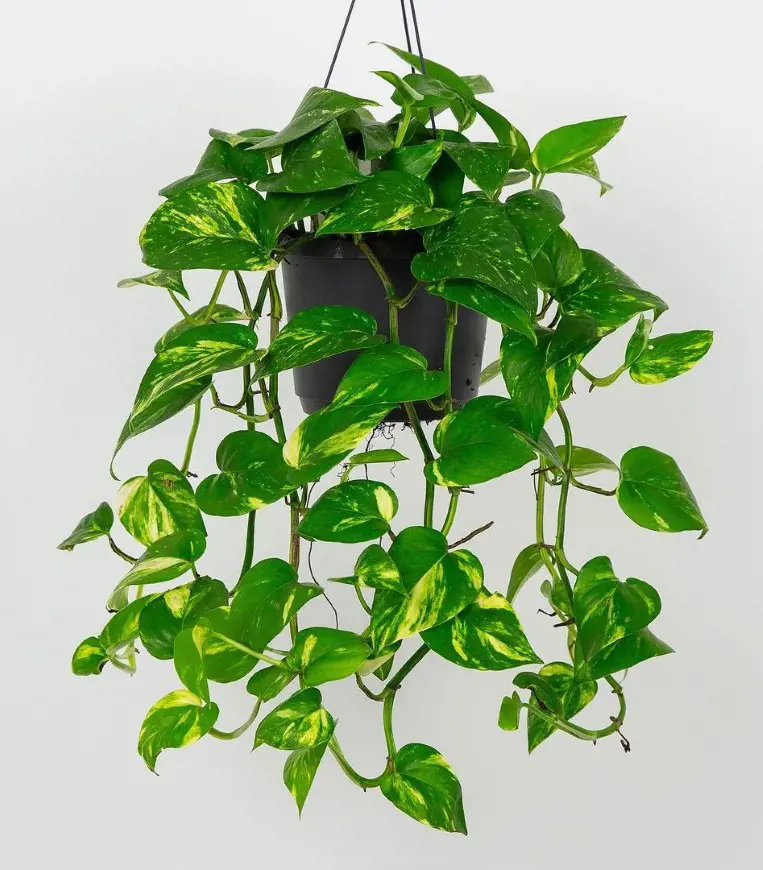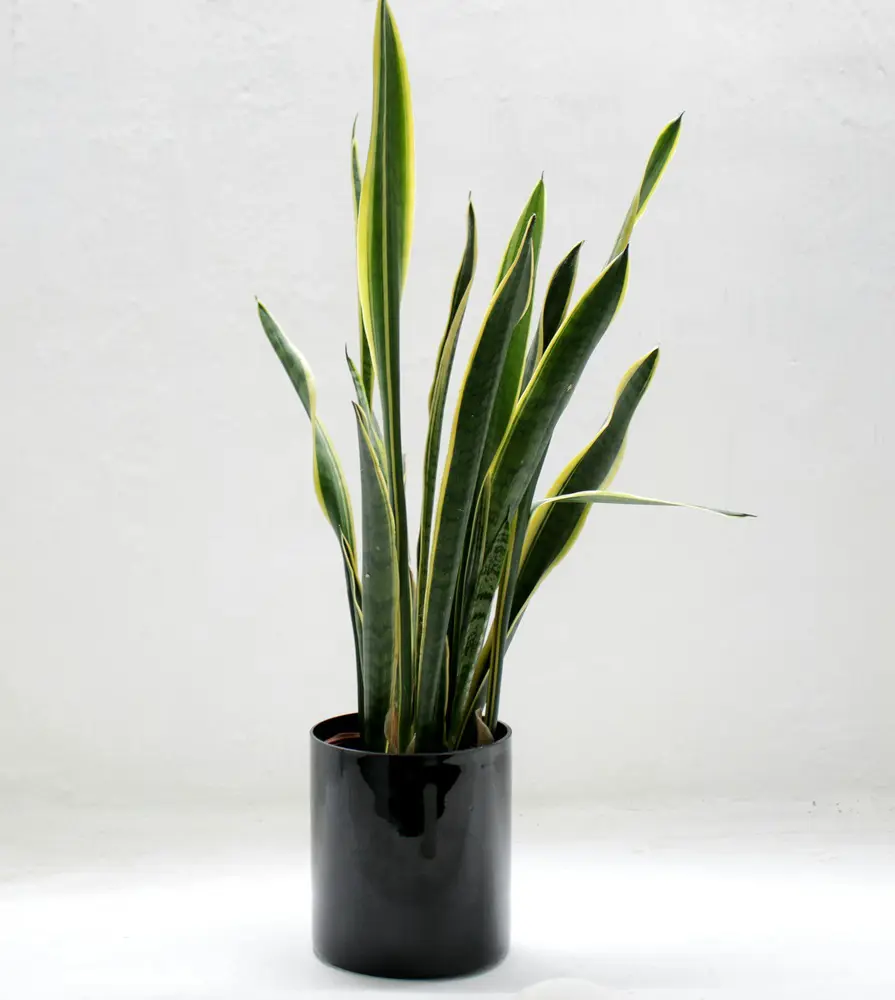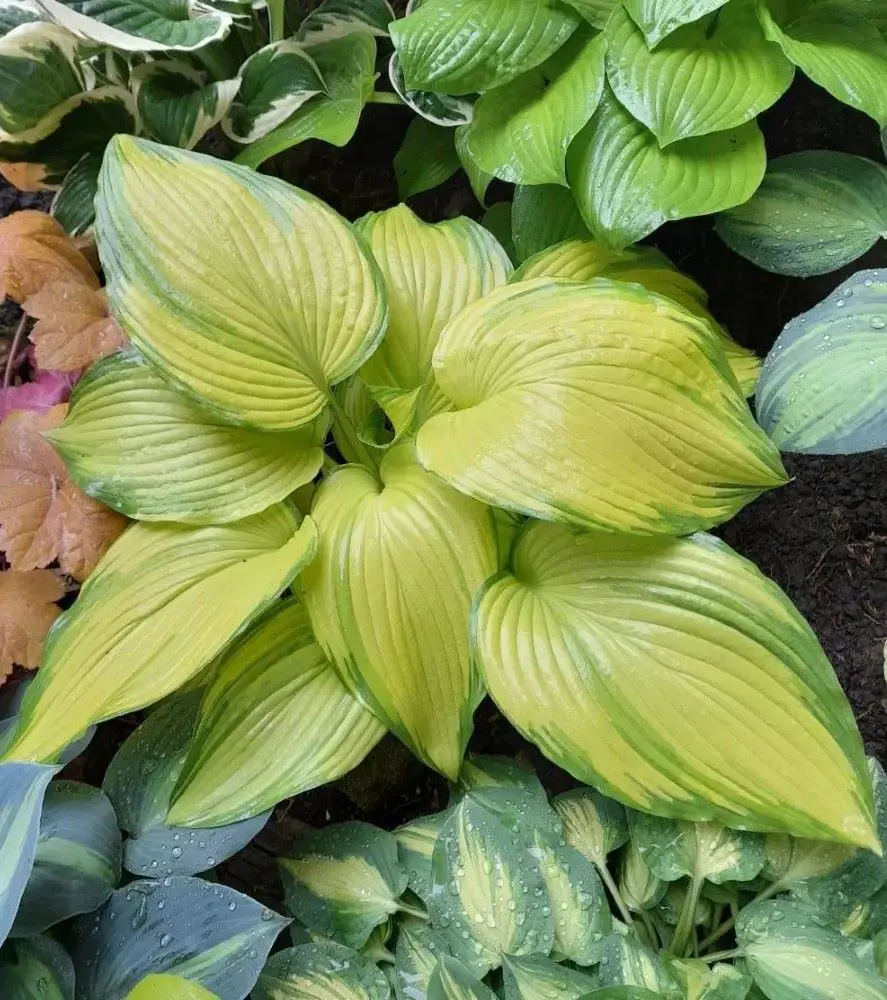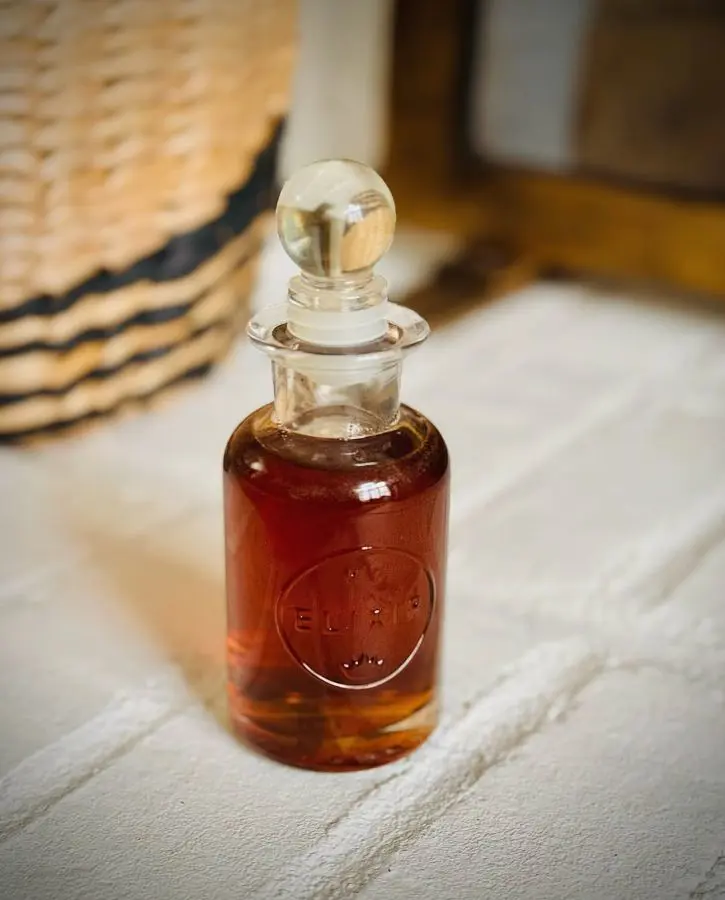Crepe Myrtle Tree Care and Growing Guide
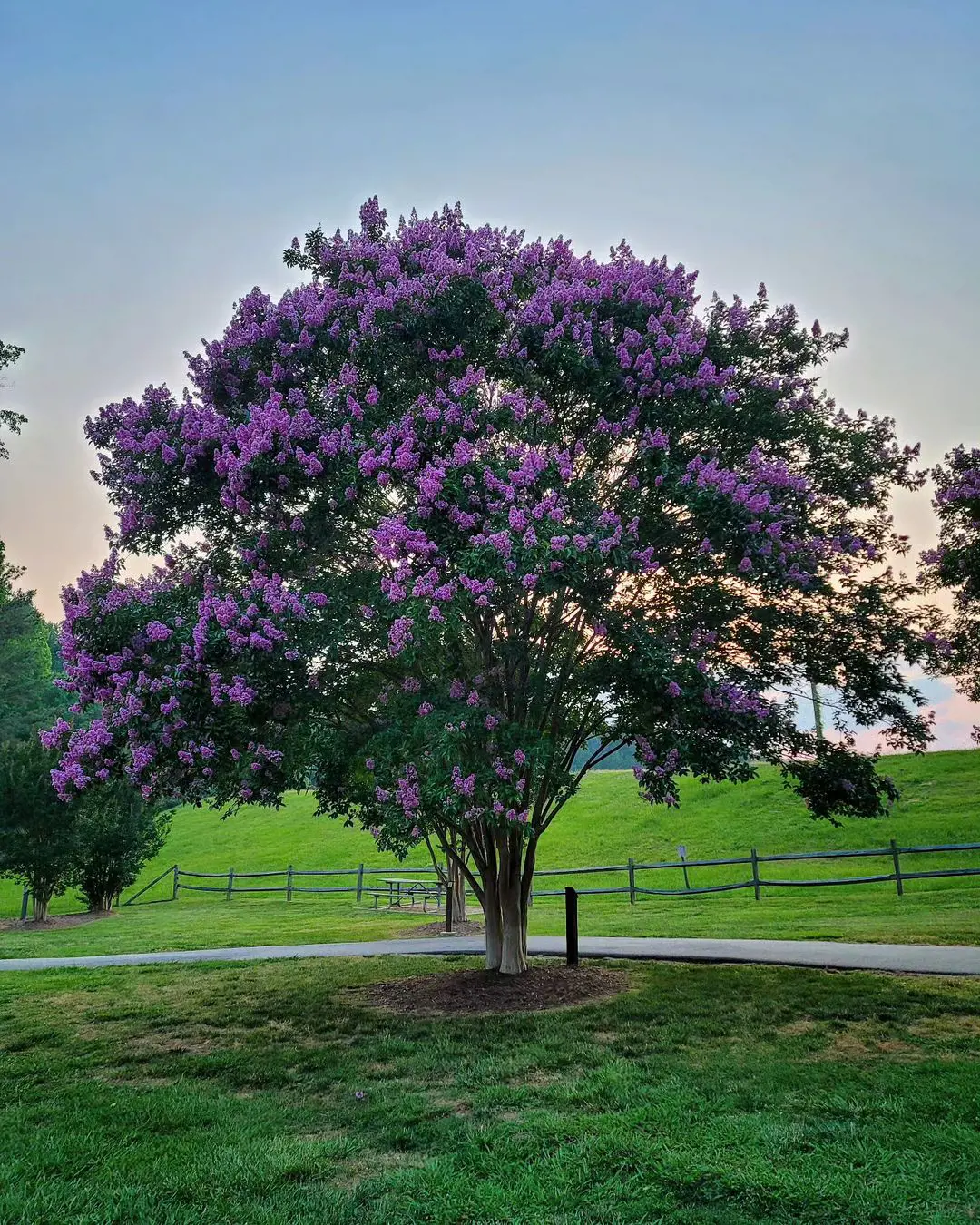
This post may contain affiliate links. If you make a purchase through links on our site, we may earn a commission.
Crepe myrtles, with their vibrant summer blooms and stunning fall foliage, are a beloved addition to landscapes across the globe. But their beauty isn't magic – it's the result of dedicated care.
Dive into the essential elements of crepe myrtle care, from choosing the perfect planting location bathed in sunlight to crafting a well-draining soil bed.
How To Care For Crepe Myrtle Tree?

Captivated by the vibrant blooms of crepe myrtles? Caring for these beauties isn't complex, but a few key steps ensure a showstopping display. Here's a sneak peek:
- Well-Drained Soil: Plants in soil enriched with organic matter.
- Sunlight: Thrives in full sun, ensure adequate sunlight.
- Watering: Deep watering during dry spells, avoiding waterlogged conditions.
- Pruning: Shape the tree by pruning in late winter and remove dead wood.
- Fertilization: Apply a balanced fertilizer in early spring.
- Pest and Disease Management: Regularly check for pests and diseases, and address issues promptly.
Now, let us discuss each of them in further detail.
Types of Crepe Myrtles
Discover the diverse world of Crepe Myrtles, a stunning genus of flowering trees and shrubs. With over 50 varieties, these beauties come in different shapes, sizes, and colors, adding a burst of vibrancy to gardens.
- Lagerstroemia indica (Indian Lilac): A versatile variety with a spectrum of colors from white to deep red.
- Natchez: A popular cultivar known for its elegant, pure white blooms and tall stature.
- Dynamite: Captivates with fiery red blossoms, adding a burst of color to any garden.
- Acoma: Showcases delicate, snow-white flowers, bringing a touch of purity to the landscape.
- Pokomoke: A compact option ideal for smaller spaces, offering a charming display.
- Muskogee: Towering and majestic, this variety makes a bold statement in gardens with its impressive height and beauty.
Optimal Sunlight For Crepe Myrtles
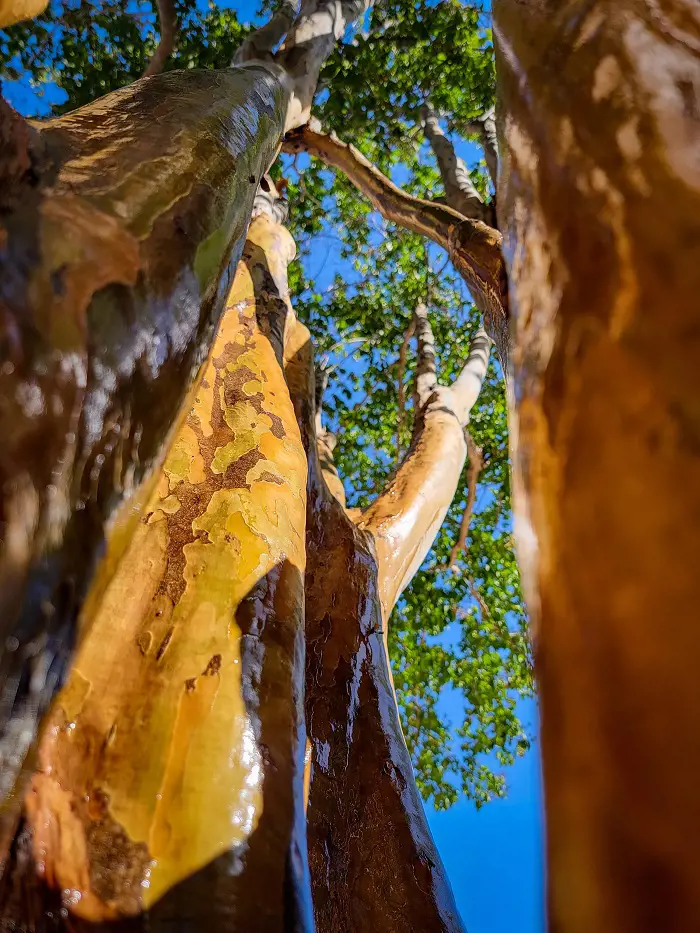
To cultivate thriving Crepe Myrtles, understanding their sunlight needs is paramount. These vibrant flowering shrubs demand a sunny environment to flourish.
Plant them in locations with at least 6 hours of direct sunlight daily, ensuring optimal growth and blooming. Adequate sunlight promotes robust photosynthesis, enabling the plant to produce energy for its development and prolific flowering.
When caring for Crepe Myrtles, it's important to monitor sunlight exposure, ensuring they receive ample light for healthy foliage and abundant blossoms.
Select well-draining soil, coupled with proper sunlight, for a successful and visually stunning Crepe Myrtle garden, enhancing your outdoor space with nature's beauty.
Watering Techniques for Healthy Crepe Myrtles
Crepe myrtles, with their showstopping blooms, might seem high-maintenance, but their watering needs are surprisingly simple – deep and infrequent. Here's how to keep them hydrated and happy:
- Begin by deeply watering the soil around the base, ensuring saturation to the root zone. Water early in the morning to allow foliage to dry, reducing the risk of diseases.
- Mulch generously to retain moisture and regulate soil temperature. Adjust the watering frequency based on weather conditions, providing more during hot spells.
- Avoid overwatering, as Crepe Myrtles prefer well-drained soil.
- Consistent, mindful watering will foster a lush, colorful canopy, transforming your garden into a haven of Crepe Myrtle beauty.
Choosing the Ideal Soil
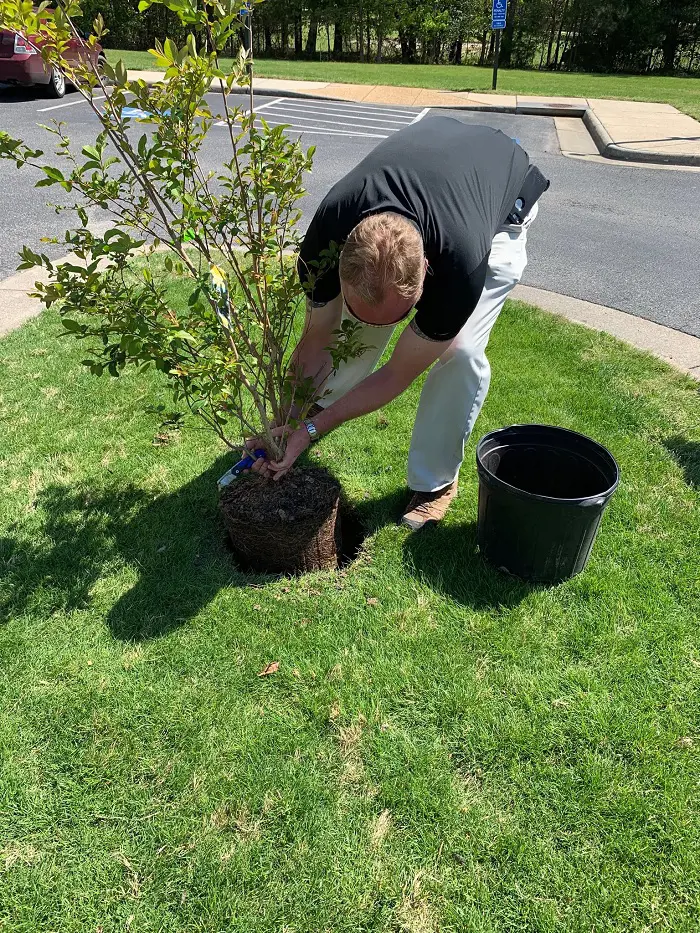
Crepe Myrtles, renowned for their vibrant blooms, thrive best in well-draining soil that strikes a balance between moisture retention and aeration. The optimal soil for these stunning shrubs is a mix of loamy soil enriched with organic matter.
A pH range of 5.5 to 7.5 is ideal, ensuring nutrient availability. Sandy soils increase drainage, preventing waterlogged roots, while well-rotted manure or compost boosts fertility.
A sun-loving species, Crepe Myrtles flourish in full sunlight, so plant them in a location with at least 6 hours of direct sunlight. Choose a soil blend that caters to their needs, and watch your Crepe Myrtles bloom in vibrant splendor.
Discover the Best Fertilizers
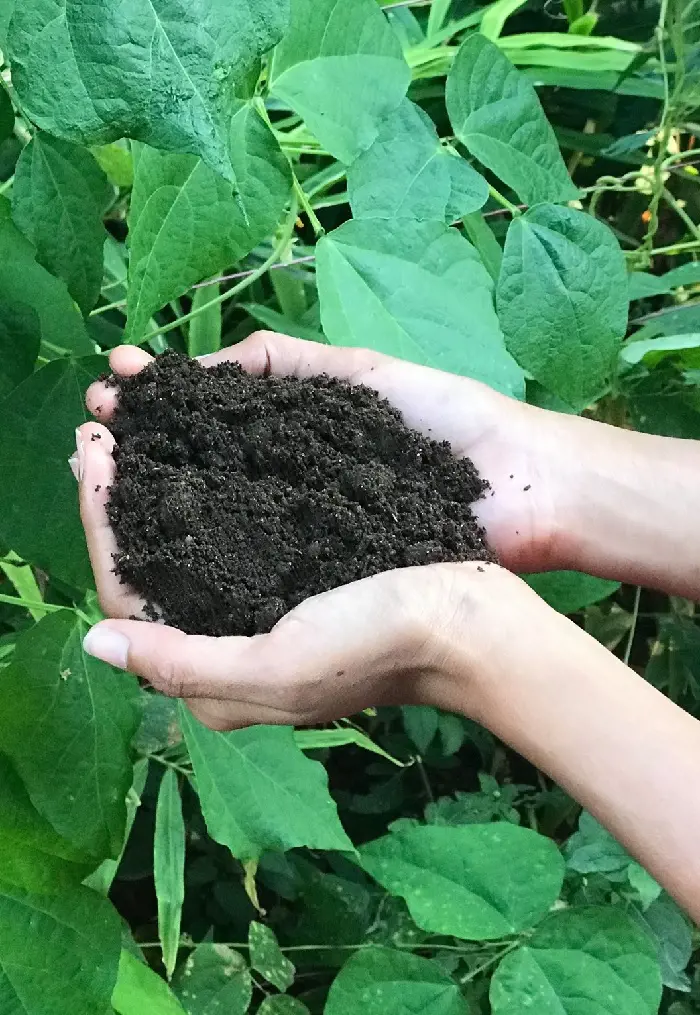
Unlock the full potential of your Crepe Myrtle tree with the perfect fertilizers that ensure vibrant blooms and robust growth. Optimal care begins with a balanced, slow-release fertilizer like 10-10-10 or 12-4-8, providing essential nutrients without overwhelming the tree.
Consider specialized formulations with micronutrients like iron and magnesium to enhance foliage color. Organic choices, such as compost or well-rotted manure, promote soil health and sustainable growth.
Do not forget to fertilize in early spring and late summer, tailoring the application to your tree's unique needs. Elevate your garden with these balanced fertilizers, nurturing your Crepe Myrtle's beauty year-round.
Enhance Your Crepe Myrtle With Pruning
Crepe myrtles, with their vibrant blooms and graceful silhouettes, add a touch of magic to any landscape. But to unlock their full potential, proper pruning is key. Here are some strategic pruning methods.
- Begin by removing dead or diseased branches to promote overall health. Encourage robust blooms by cutting back weak shoots and fostering a well-structured canopy.
- Employ the "crape murder" technique sparingly, opting for gentle shaping instead.
- Focus on maintaining a balanced framework to enhance sunlight penetration and air circulation.
- Timing is crucial; prune in late winter or early spring for optimal results.
- Elevate your gardening prowess by mastering these pruning methods, ensuring a breathtaking display of vibrant Crepe Myrtle blossoms in your outdoor haven.
Thermic Tender Care
To cultivate a thriving Crepe Myrtle tree, understanding the ideal temperature is paramount. These resilient trees flourish in USDA hardiness zones 7-9, favoring a moderate climate.
In the heat of summer, ensure your Crepe Myrtle tree receives ample hydration and make sure to shield it from scorching temperatures.
Meanwhile, during winter, protect against frost by providing a layer of mulch around the base. They thrive in temperatures ranging from 60°F to 80°F, i.e. 15°C to 27°C.
Continuous monitoring and adjustments to extreme conditions will safeguard your tree, fostering a picturesque landscape adorned with the resplendent blossoms of the Crepe Myrtle.
Pest and Disease Management
Guard your Crepe Myrtle against potential threats with vigilant pest and disease management.
- Regularly inspect leaves for signs of aphids, scale, or powdery mildew.
- Introduce natural predators like ladybugs or use neem oil for eco-friendly control.
- Prune infected branches promptly, minimizing the spread of diseases.
- Employ a well-balanced fertilizer regimen to bolster the tree's resilience.
- Mulching around the base aids in moisture retention while preventing soil-borne diseases.
- Stay ahead by maintaining proper spacing between plants, and fostering adequate airflow.
With a proactive approach to pest and disease management, your Crepe Myrtle will flourish, gracing your landscape with enduring beauty.
When to Grow Crepe Myrtle Tree?
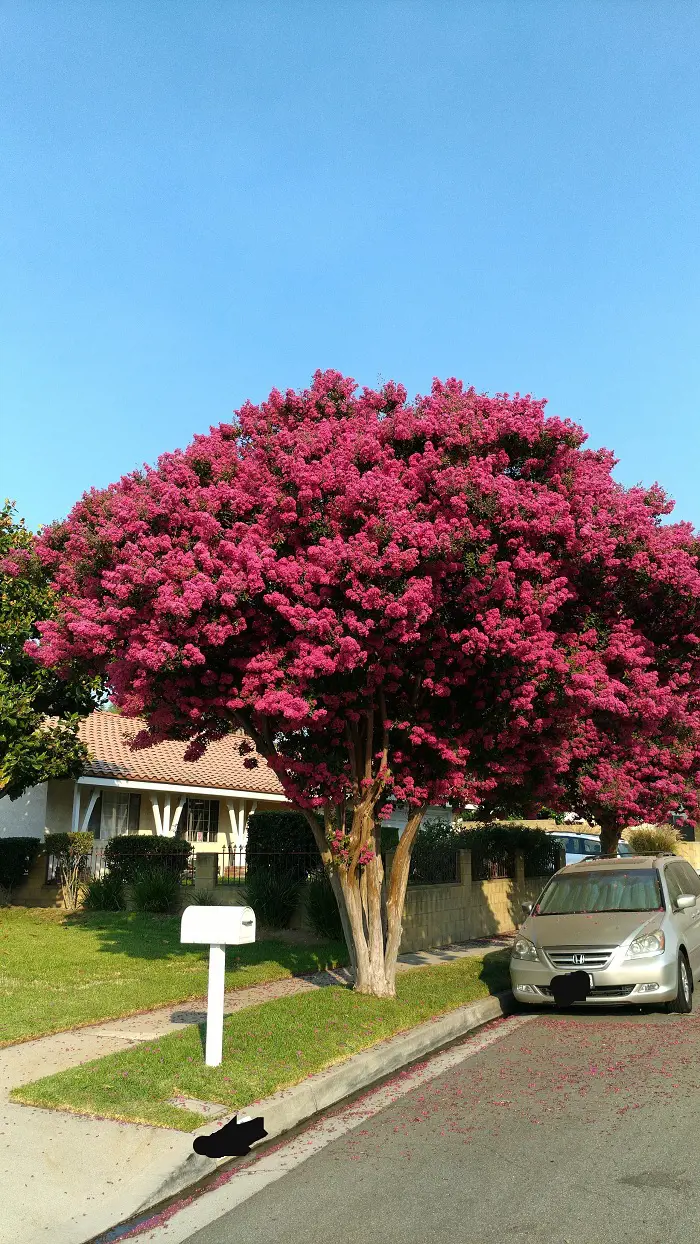
Selecting the right time to grow Crepe Myrtle trees greatly influences their vitality and beauty. Ideally, plant these ornamental wonders in early spring or late fall when the soil is workable and temperatures are mild.
This grants the trees ample time to establish sturdy roots before facing harsh weather conditions. Avoid extreme summer or winter planting, as they may compromise the tree's resilience. Prioritize well-draining soil and adequate sunlight for optimal growth.
By following these guidelines, you ensure your Crepe Myrtle thrives, gracing your landscape with its iconic, vibrant blooms during the warm seasons.
Diseases That Threaten Crepe Myrtle
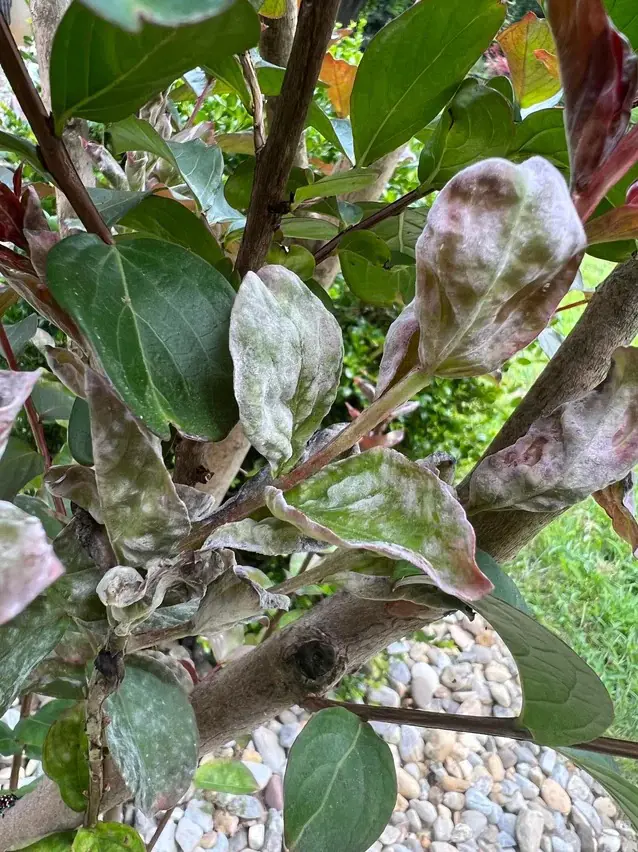
Crepe Myrtle trees, cherished for their vibrant blossoms, are susceptible to various diseases that can compromise their beauty.
- Powdery mildew, a common fungal infection, manifests as a powdery white substance on leaves, hindering photosynthesis.
- Cercospora leaf spot causes dark lesions, affecting foliage vigor.
- Aphids and scale insects can transmit sooty mold, impairing the tree's aesthetics.
To safeguard your Crepe Myrtle, practice proper sanitation, secure good air circulation, and conduct consistent pruning. Employ fungicides and insecticidal soaps when needed, and promptly remove infected plant material.
Vigilant care and early intervention will fortify your Crepe Myrtle against potentially fatal diseases, preserving its splendor.
Fertilization Techniques for Crepe Myrtle
Elevate your Crepe Myrtle's vitality with precision fertilization techniques. Start in early spring, utilizing a balanced slow-release fertilizer rich in nitrogen, phosphorus, and potassium.
Apply it evenly around the tree's drip line, avoiding direct contact with the trunk. Employ a granular formulation, ensuring a gradual nutrient release for sustained growth.
For established trees, a yearly application suffices, while younger specimens benefit from feeding every 6-8 weeks during the growing season. Water generously post-fertilization to activate nutrient absorption.
Practice these application nuances to unlock the full potential of your Crepe Myrtle, yielding a spectacle of vibrant, flourishing blossoms.
Planting Tips for Successful Growth
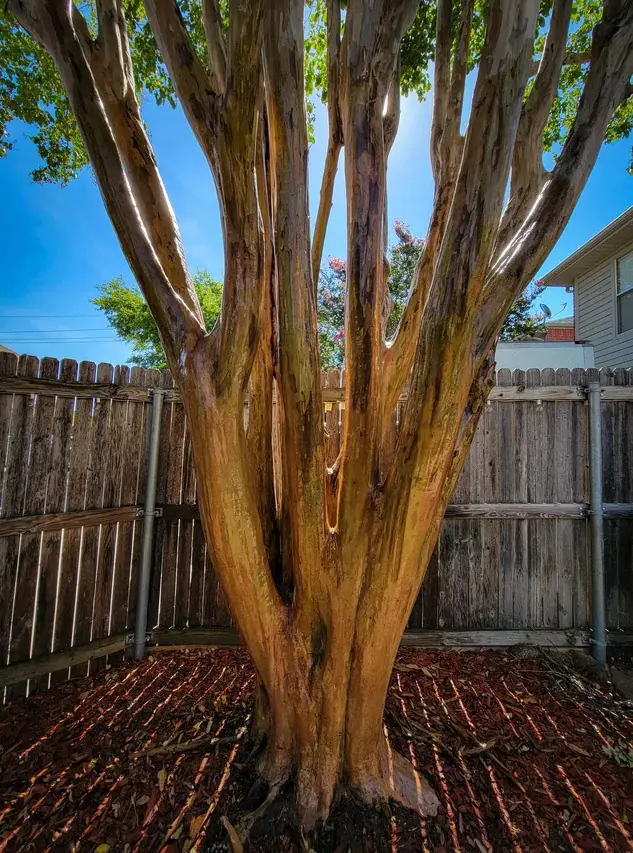
Embark on a successful journey of growing a vibrant Crepe Myrtle tree with these planting tips.
- Choose a well-draining site bathed in sunlight, that can offer at least 6 hours of direct exposure.
- When planting, dig a hole twice as wide as the root ball but just as deep.
- Mix organic matter into the soil for enhanced fertility. Place the tree, backfill the hole, and water generously.
- Apply a layer of mulch to retain moisture and deter weeds.
- Regularly water the young tree until established, and consider a balanced fertilizer in spring.
Embrace these guidelines, and watch as your Crepe Myrtle transforms into a flourishing emblem of botanical elegance in your landscape.
Why Are Crepe Myrtle Leaves Yellow?
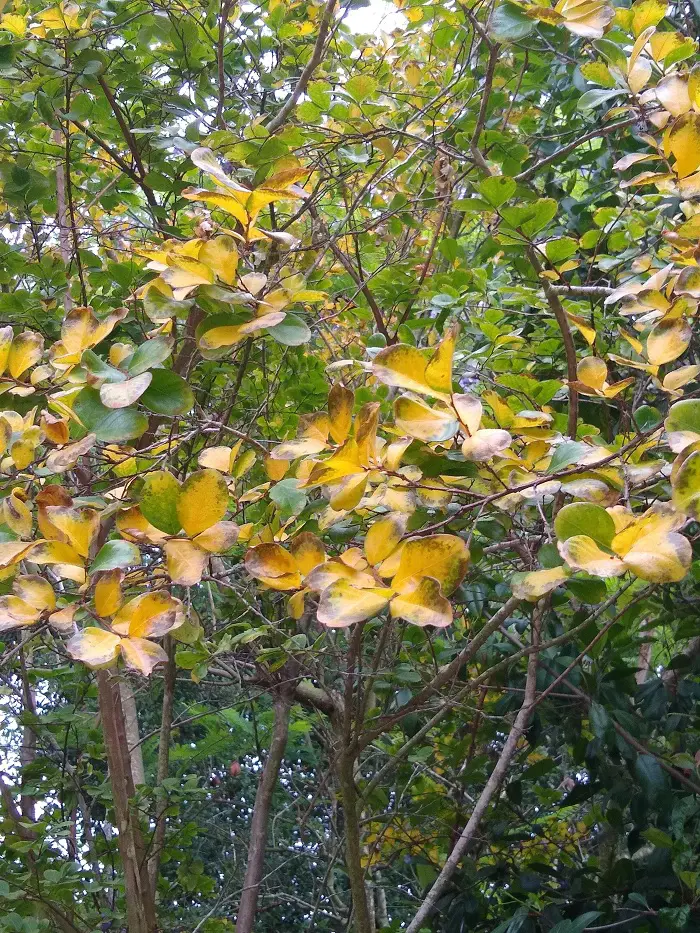
The golden allure of Crepe Myrtle leaves could fade to yellow, signaling potential problems in their health. Multiple factors contribute to this chromatic shift. Soil acidity may be askew, impeding nutrient absorption. Inadequate irrigation or waterlogged roots can induce yellowing as well.
Pests like aphids or spider mites may be extracting vital juices. Insufficient sunlight or excessive shade hampers chlorophyll production, leading to discoloration.
Evaluating these factors is crucial for remediation. You can adjust soil pH, regulate watering, implement pest control, and optimize sunlight exposure to revive the verdant charm of your Crepe Myrtle, restoring its vitality and vibrancy.
Additional Care Tips
Here are some bonus care tips to elevate your crepe myrtle from good to great:
- Regular Inspection: Routinely inspect the foliage for signs of stress, discoloration, or abnormalities. Early detection allows for prompt intervention and resolution of potential issues.
- Avoid Overwatering: While consistent watering is crucial, ensure the soil has proper drainage to prevent waterlogging, which can lead to root rot.
- Selective Thinning: Thin out crowded branches to enhance air circulation within the canopy, decreasing the risk of diseases, and promoting overall tree health.
- Winter Protection: In colder climates, shield young/vulnerable Crepe Myrtles from harsh winter conditions with burlap wraps or covers to prevent frost damage.
Recent posts
Plant Care
Plant Care
How To Take Care Of An Orchid Plant? 11 Tips And Tricks
If you love gorgeous orchids but are worried they're too high-maintenance, don't worry. This guide is like a cheat sheet for orchid newbies. Forget fancy words and confusing schedules — we're talking about how to take care of an orchid pla...
Plant Care
How To Grow and Care For Peace Lily Plant
The Peace Lily is an indoor plant that is most valued for its beautiful and shiny green leaves as well as the white blooms. Hard and tolerant, it’s naturally a low-maintenance addition to your plant collection. If you are confused, let us tell ...
Plant Care
Pothos Plant Care And Growing Guide
Adding a Pothos plant (Devil’s Ivy) to your home benefits the environment and aesthetic of your personal space. It's easy to maintain and is loved for it's ability to enhance indoor air quality by removing toxins like formaldehyde, benzene, and...
Plant Care
Snake Plant Care and Growing Guide
Snake plants require low maintenance, and low light and are almost impossible to kill, making them a perfect plant for beginners and seasoned gardeners. In this guide, we will explore essential care tips and optimal growing conditions for snake plant...
Plant Care
How To Plant, Grow and Care Majesty Palm
The majestic palm, scientifically known as Ravenea rivularis, makes for a stunning indoor tree with its lush and grand fronds. Originating from Madagascar's river banks, this resilient houseplant is cherished not only for its beauty but also for its ...
Plant Care
How To Grow And Care For A Hosta Plant
Hosta plants are widespread perennials, often grown for their beautiful and diverse foliage. They are extremely easy to care for and can thrive in various conditions, particularly shade or semi-shade. These hardy plants can last for many years and re...


